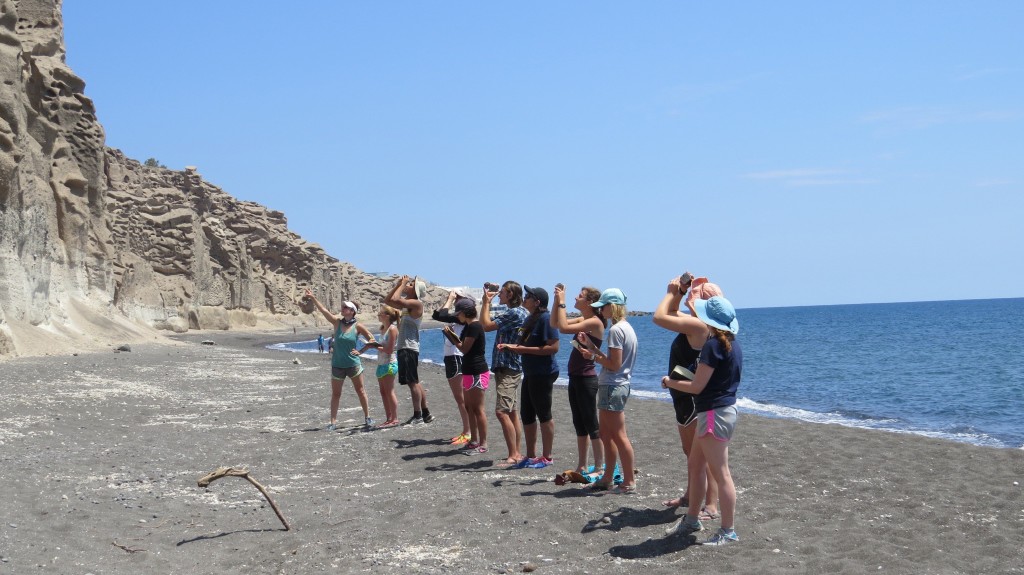By Lisa Skinner, geology lecturer
For the second summer in a row, I’m spending three weeks with freshman and sophomore NAU students in Santorini, Greece. The study abroad experience is part of an earth and environmental sciences class.
This intense geological field experience takes the students on daily visits to Santorini’s multi-colored beaches, where they use rock descriptions to interpret the vast and complex volcanic history of the island. Over their time on this Aegean archipelago, they not only learn about its 1.6 million year history, but also its recent activity and future threats.
The class has already had many adventures including a steep hike to the summit of a 1,214-foot promontory where they were rewarded with the view of Ancient Thera, a ninth century BC Spartan ruin. We have visited Ancient Akroteri, a 3,600-year-old Minoan city buried and preserved for posterity by the Minoan eruption of Santorini volcano in about 1613 B.C.
After we finish with our many long days describing the rocks of Santorini’s last cataclysmic eruption, we will take a private boat tour of the north caldera where we will hike to the top of the active resurgent shield, swim in hot springs filled with iron precipitate and snorkel over a vast abyss that is the caldera floor drop off.
The cohort of students recruited for this class comes from a wide variety of backgrounds and areas of expertise. This year we have majors from anthropology, criminology, education, environmental sciences, geology, hotel and restaurant management, and parks and recreation.
This diversity of backgrounds is reflected in their weekly blogs posts, which is a collection of stories describing their personal experiences and their insights on the geology of the Aegean region, origins of volcanoes in the Aegean Sea, Santorini’s violent past and unpredictable future.



